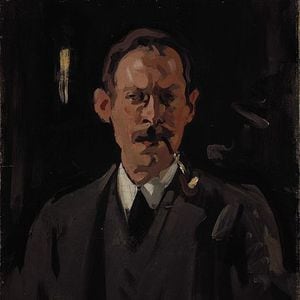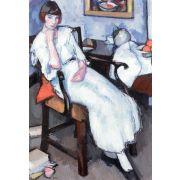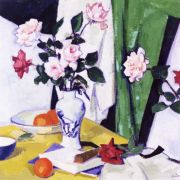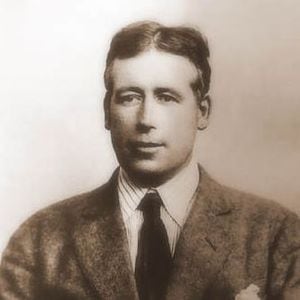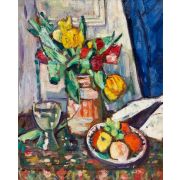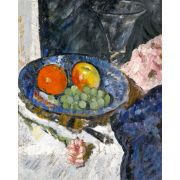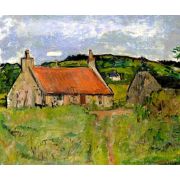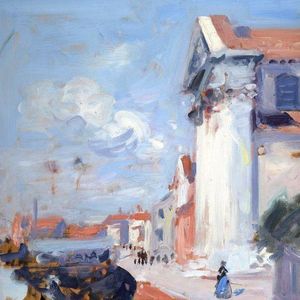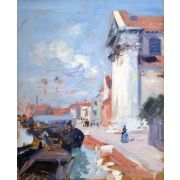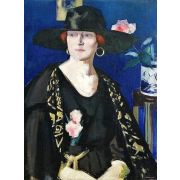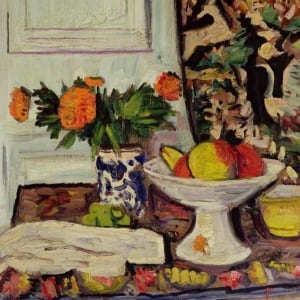
Scottish Colourists
Scottish Colourists
1 to 3 out of 3 artists
Samuel John Peploe
1871 -1935, Scottish / Scottish Colourists and Post-Impressionism, 437 works
George Leslie Hunter
1877 -1931, Scottish / Scottish Colourists, 269 works
1 to 3 out of 3 artists
Paul Gauguin's use of Tahitian themes in his paintings and pottery are examples of the Primitivist movement in Western art, which appropriates visual forms from non-Western or ancient peoples. Much of what we know as "modern art" owes a debt to prehistoric works.
Primitivism is also used to describe the work of other professional artists like Henri Rousseau, Mikhail Larionov, Paul Klee, and others who draw inspiration from naive or folk art traditions.
The question of whether or not we should simplify our lives and return to "back to basics" has been debated since the birth of writing. The Myth of the Golden Age celebrated the virtues of a simpler lifestyle and was reflected in the European poetry and art known as the Pastoral. The European interaction with previously unknown peoples following the Americas and the Pacific Islands voyage by Columbus and others rekindled the argument about the benefits of a simple versus a complex way of life.
It was common practice during the Enlightenment for critics of European civilization to exploit arguments about the putative superiority of indigenous peoples as a rhetorical technique. The eccentric Italian philosopher, historian, and jurist Giambattista Vico (1688-1744) were the first to suggest that primitive man was closer to the sources of poetry and creative inspiration than "civilized" or modern man. Vico penned these words during a heated period of a dispute over the relative merits of classical poetry like that of Homer and the Bible and current vernacular literature.
Homer and the Bible are two instances of folk or oral tradition that the German scholar Friedrich August Wolf highlighted as having a unique quality in the 18th century (Prolegomena to Homer, 1795). Herder, writing around the turn of the 19th century, expanded on the thoughts of Vico and Wolf. However, although these arguments were powerful in literature, only a tiny percentage of the educated public was exposed to them, and they had little to no effect on the visual arts.
In the nineteenth century, historicism arose for the first time, allowing people to evaluate events and people in various times using the standards of that period. As a direct consequence of this newfound interest in history, several artistic movements emerged that sought to achieve a degree of historical accuracy in setting and costume not seen before. One effect was the rise of neoclassicism in the visual arts and architecture. The Nazarene movement in Germany was another "historicist" artistic movement that looked to the so-called "primitive" school of devotional paintings in Italy for inspiration (i.e., before the age of Raphael and the discovery of oil painting).
While traditional academic painting (in the wake of Raphael) favored dark glazes, very selected, idealized shapes, and strict suppression of details, the Nazarenes favored bold outlines, vivid colors, and meticulous attention to minor details. The Pre-Raphaelites, the English equivalent of the German school, were influenced by the critical writings of John Ruskin and shared their admiration for the artists who came before Raphael (such as Botticelli) and their advocacy for painting outdoors, which had previously been frowned upon.
